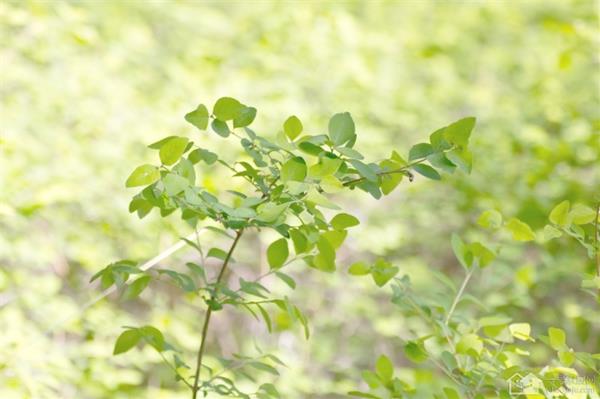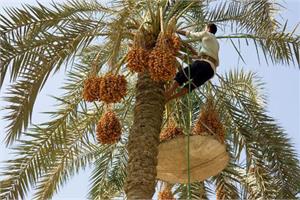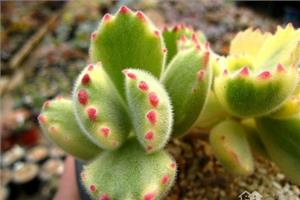Home plants: What are the methods of plant seed transmission
With the higher and higher level of urbanization, many children grow up in cities, and some basic laws of nature are not clear, especially the reproduction and growth patterns of all kinds of plants that can be seen everywhere in life, basically no one knows. So what are the main ways and ways of spreading plant seeds? One is to rely on external forces, such as wind, water, animals and human beings to carry; the other is to rely on their own strength. Next, I would like to show you what are the plants that spread in different ways.

1. Spread by the wind
Seeds spread by the wind are usually of lighter quality and can be suspended in the air and move everywhere with the wind. The seeds of some plants also grow special structures suitable for flying with the help of the wind. For example, the fine hairs on the seeds of cotton and willow; the umbrella-shaped crown hairs on the fruit of dandelion; some of the pericarp and seed coat of pine, maple, elm and other plant seeds spread into wings; the fruits of the genus sour berries have thin-film air bags, and so on. In spring, catkins are flying everywhere. Grab a ball of willow catkins and observe carefully, you will find that there are some small particles inside, that is, the seeds of willows. Willow trees rely on the flying catkins to spread their seeds in all directions.
2. Spread by humans and animals
Some seeds have spiny hairs, barbs or mucus on the outside, which will immediately adhere to human clothes or animal hair or feathers at the slightest touch, and when you find them, take them off and throw them to the ground. At this time, its wish to spread has been realized, such as Xanthium, stolen clothes, Bidens bipinnata and so on.
Cherry, wild grape, wild ginseng and other succulent fruit plants, rely on birds or other animals to eat seeds into the stomach, because they can not digest, then along with the feces out to spread to all directions. When eating these delicious fruits, human beings tend to throw away the kernels and unwittingly become the "messengers" of seed transmission.
There are also some nut seeds, such as chestnut and pine nuts, which are squirrels' favorite foods. They are moved home and stored by squirrels. Some of them will be eaten, and the rest will take root and sprout in the coming year.
3. Spread by water
The seeds of plants growing in water and marshes are often transmitted by water. For example, the common fruit of lotus, that is, lotus canopy, is inverted conical in shape and light in weight. It can float on the water like a leaf boat and float everywhere with the current. At the same time, the seeds are spread all over the place.
There are also coconuts in terrestrial plants, whose fruit has multiple functions. The mesocarp of coconut is very loose and rich in fiber, which can adapt to floating in water, and the endocarp is extremely thick, which can protect seeds from the erosion of sea water. The fruit also contains a large amount of coconut water, which is enough to supply the nutrition and water needed for seed germination, which enables coconut fruit to germinate in salt water. There are many coconut forests on the tropical coast, which are closely related to the ability of coconut.
4. Spread on one's own strength
Our common pods, when they are ripe, the dry and hard peel often burst with a baking like the hot sun, and the seeds will be ejected into the distance like bullets flying out of the chamber of the gun. therefore, cash crops such as soybeans, rape and sesame must be harvested in time after maturity, otherwise, the seeds will spread to the field and cause people to suffer losses. Impatiens mother's method is similar to that of pea mother. Balsam fruit explodes when ripe, and impatiens mother sends seeds in all directions in this way.
Some plants also have a special device for automatic sowing. There is a plant called "spray melon", which produces ugly melons with burrs. Do you know its secret? When the melon is ripe, as long as it is slightly touched, it will fall off and spray the seeds from the top in an instant, with a range of up to 6 meters, hence the name. The most interesting thing is the seed of wild oat growing in the wheat field, which can "crawl" into the soil by itself. There is a long awn on the shell of wild oat seed, which rotates or straightens with the change of air humidity. The seed moves forward little by little in the continuous extension of the long awn, and once it touches a gap, it will drill in. The next year, it will take root and sprout. Of course, wild oat seeds "crawl" very slowly, only 1 inch a day and night, but this ability to spread seeds has reached its peak.
Through the above detailed introduction of the growth habits of various plants and seed transmission ways and ways, mainly divided into whether with the help of external forces or rely on their own strength of two categories, each category is subdivided into several small categories, through the summary of the mode of transmission and the actual introduction of plant transmission, do we have a deeper understanding of the laws of nature? Whether it is natural plants, or human beings, animals and so on, the reproduction of their own offspring has always been an important part of the process of growth and evolution.
Related
- Wuhan Hospital Iron Tree Blooming Result Was Instantly Frightened by the Gardener Master
- Which variety of camellia is the most fragrant and best? Which one do you like best?
- What is the small blue coat, the breeding methods and matters needing attention of the succulent plant
- Dormancy time and maintenance management of succulent plants during dormancy
- Minas succulent how to raise, Minas succulent plant pictures
- What are the varieties of winter succulent plants
- How to raise succulent plants in twelve rolls? let's take a look at some experience of breeding twelve rolls.
- Attention should be paid to water control for succulent plants during dormant period (winter and summer)
- Watering experience of twelve rolls of succulent plants
- Techniques for fertilizing succulent plants. An article will let you know how to fertilize succulent plants.



